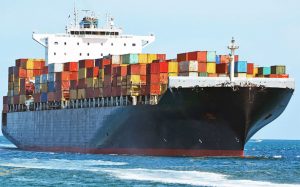When you’re calculating sea freight costs, your attention likely focuses on the basic shipping rate—yet this represents only a fraction of your total expense. You’ll encounter detention fees, demurrage charges, terminal handling costs, and seasonal surcharges that can double your initially projected budget. These hidden accessorials often catch shippers unprepared, turning profitable shipments into financial burdens. Understanding these complex cost structures doesn’t just save money; it transforms how you approach global logistics and impacts your competitive advantage in international markets.
Hidden Accessorial Charges That Can Double Your Shipping Budget
While base container rates often appear manageable on initial quotes, the true cost of sea freight transportation frequently balloons due to numerous hidden accessorial charges that many shippers fail to anticipate.
You’ll encounter detention fees, demurrage charges, container inspection costs, and terminal handling fees that significantly impact your sea freight container budget. Understanding these inevitable surcharges before booking helps prevent budget overruns and enables accurate total landed cost calculations.

Detention and Demurrage: The Silent Profit Centers of Shipping Lines
Among the most costly accessorial charges, detention and demurrage fees represent substantial revenue generators for shipping lines, often transforming into what industry insiders call “silent profit centers.” These time-based penalties accrue when you exceed the free time allotted for container usage (detention) or storage at terminals (demurrage).
You’ll find these charges escalating rapidly, often at $100-$300 per container daily. Careful planning and documentation can help you mitigate these expenses that significantly impact your total shipping costs.
Seasonal Rate Fluctuations and How to Navigate Peak Pricing
Because global trade follows predictable annual patterns, sea freight container costs experience significant fluctuations throughout the year. You’ll face peak pricing during Q3 and Q4 when retailers stock for holiday seasons, with rates often doubling baseline levels. To minimize exposure, consider booking containers 4-6 weeks in advance during high-demand periods or shifting non-urgent shipments to Q1-Q2 when utilization rates decrease.
Fuel Surcharges and Environmental Fees: The Growing Cost Factors
Beyond the seasonal price variations, fuel surcharges and environmental fees now represent substantial components of your total sea freight expenditure. These fluctuate based on global oil prices and regulatory compliance costs. You’ll encounter Bunker Adjustment Factors (BAF) that carriers adjust quarterly, alongside newer emissions-related charges such as IMO 2020 compliance fees and Carbon Intensity Indicator (CII) assessments from international maritime regulations.
